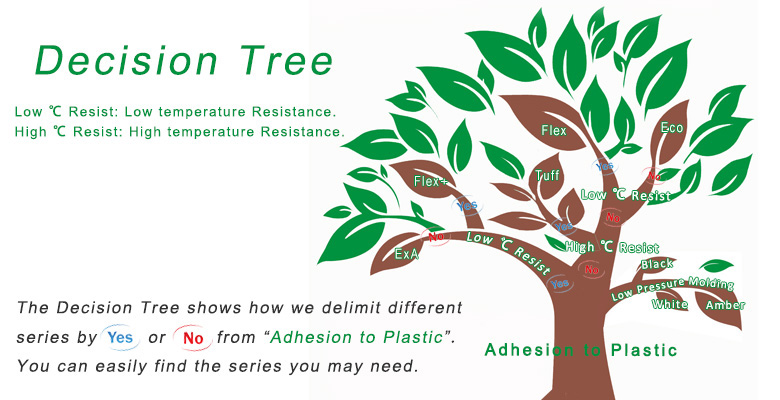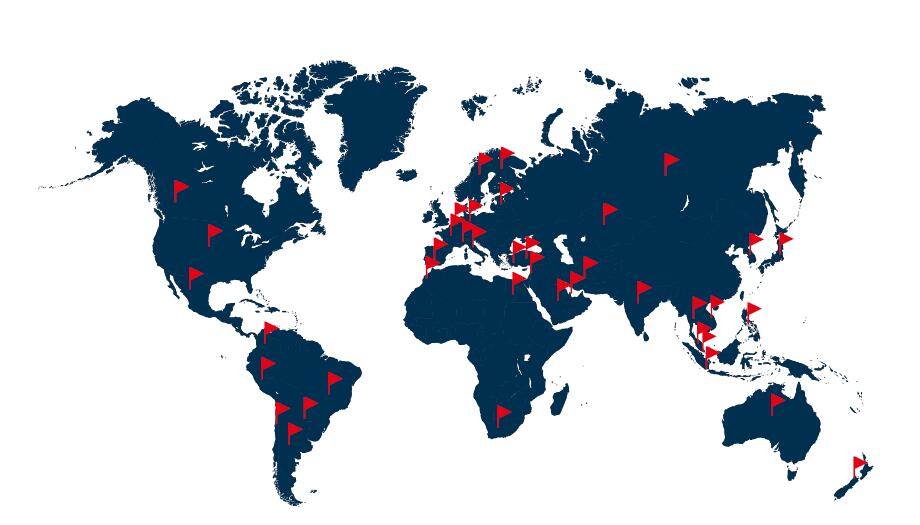1.1 What is HMPA (Hot melt polyamide resin) ?
Polyamide resin has a history of more than 60 years. The structure of polyamide resin is complicated, but because of its regular structure, symmetry, small steric hindrance and polarities containing amide groups, it has the characteristics of easy crystallization, high melting point and poor solubility, so it is difficult to use as a hot melt adhesive.
With the development of polymer chemistry, people have further understanding and research on the structure of polyamide, and modified polyamide hot-melt adhesive with excellent performance. It’s now widely used in footwear, clothing, electronics, telecommunications, home appliances, automobiles and machinery industries.
Polyamide hot melt adhesives are mainly thermoplastic polyamide resins.
2.1 Why Choose HMPA's (Hot melt polyamide resin) ?
Easy Processing (e.g. low pressure molding)
Chemical Resistance
Heat Resistance Strength
Low Temperature Resistance
PVC Plasticizer Resistance
Green Strength
Long Open Time
Adhesion to porous substrates
Ink Grade vs HMPA Grade
Typically, ink grade is lowest cost
Cheaper raw materials
Processing on belt vs. underwater pelletizer
Flexibility
Adhesion to polar and non-polar substrates
High temperature resistance
2.3 Our Honor
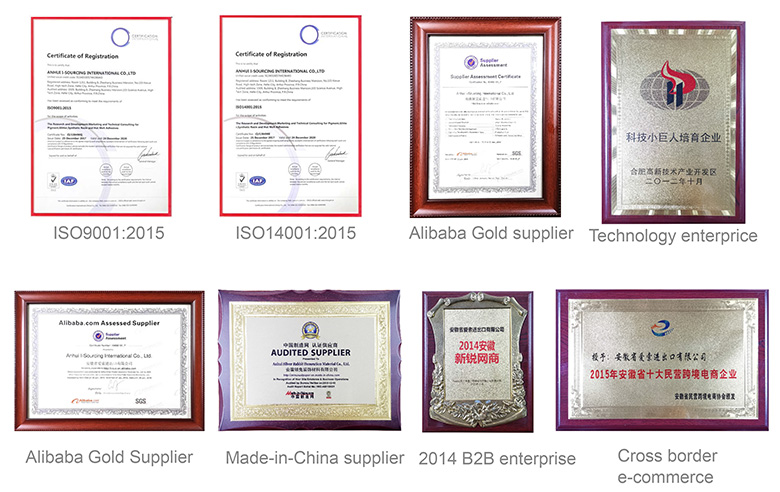
R&B Softening point, Sometimes R&B range
Example 130C, 125 to 135C
Brookfield viscosity @ specified temperature, typically cps
Example 18,000 cps at 190C
190C is typical
Higher softening points will use 205C and higher, up to 230C
HMPA’s start to degrade at 240-250C
Termination
Acid
Some believe better thermal stability
Amine
Some believe better adhesion
Color (Gardner value in solution – typically 20% to 40%).
Typical value is 8
Mechanical Properties
Adhesion strength
Electrical Properties
3. Product Series
These categories provide targeted solutions for all major bonding problems and substrates covering a wide range of industries including automotive, tape, footwear, electronic, medical, packaging, wood assembly, carpet and textiles.
3.1 Eco Series
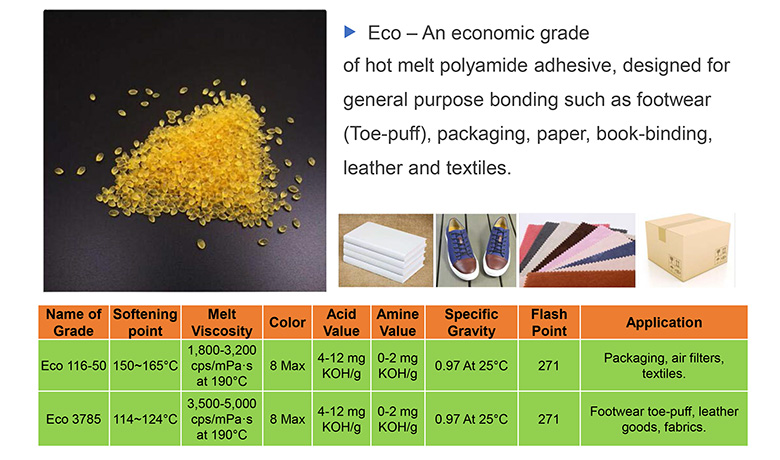
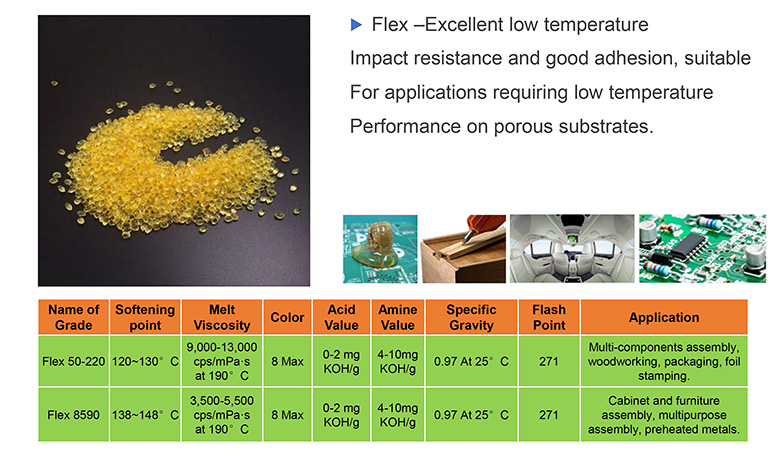
3.3 Flex+ Series
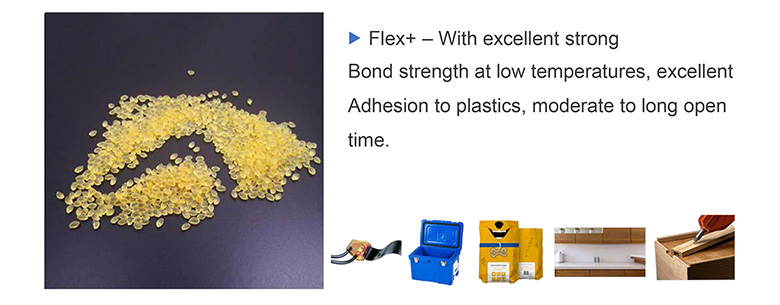
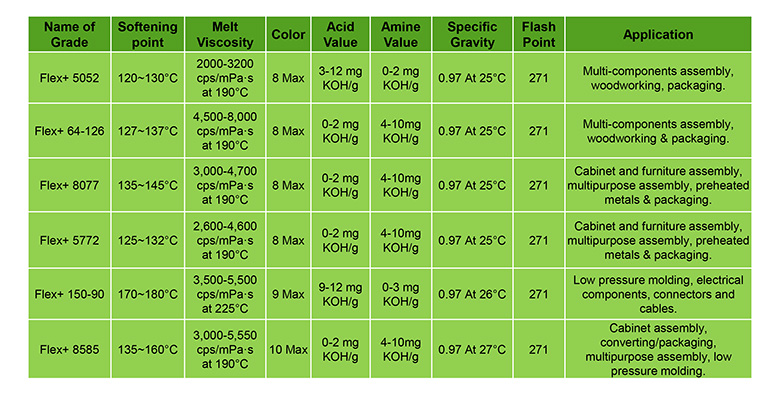
3.4 ExA Series
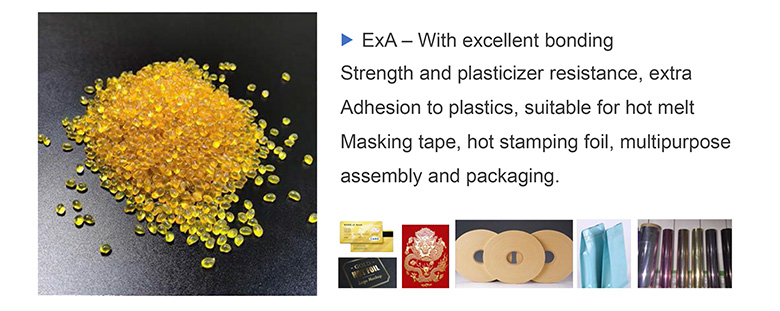
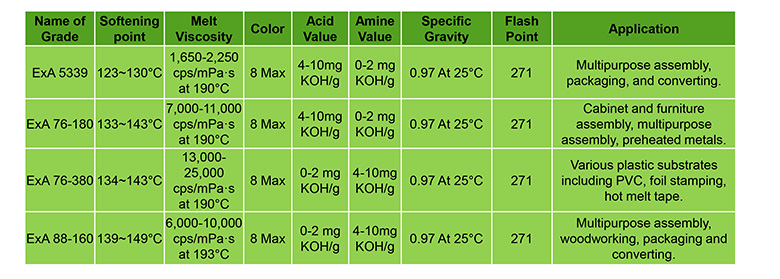
3.5 Tuff Series
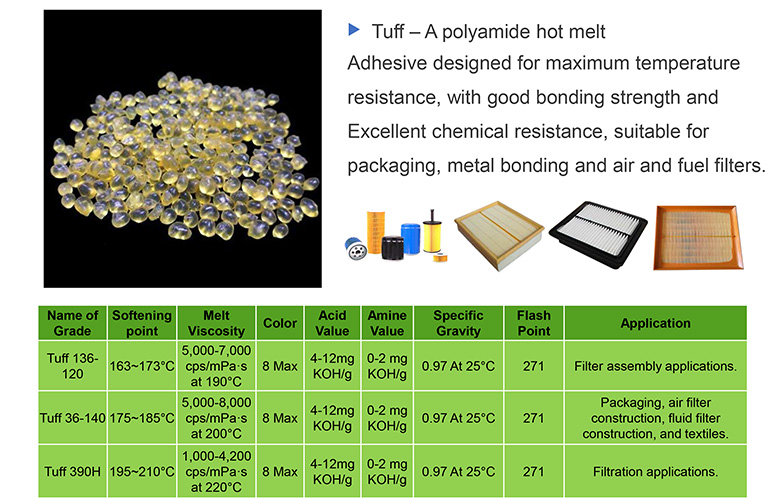
3.6 LPM Series
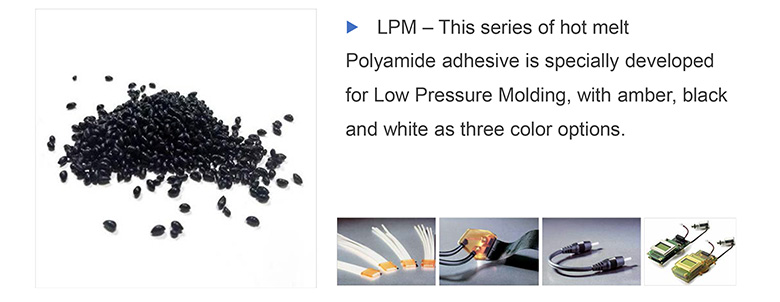
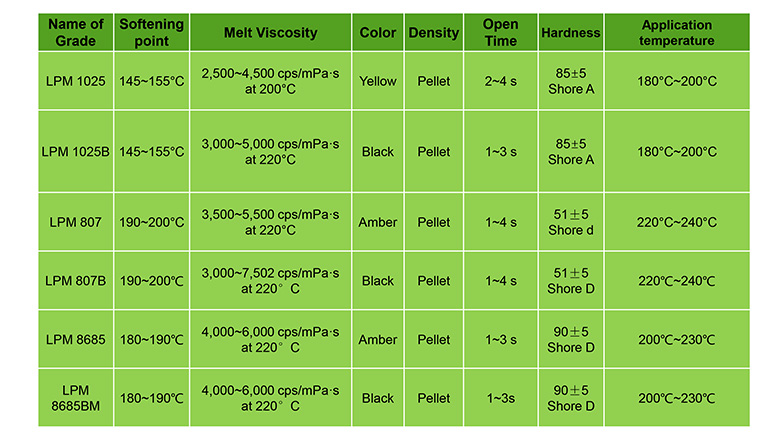
3.7 Decision Tree
